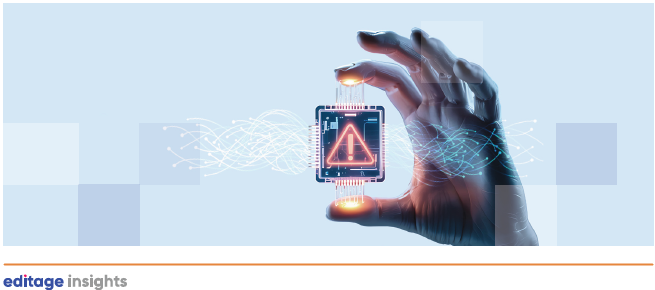Infographic: Evolution of Research Publishing: 2012-2025

Editage Insights completes 12 years
To commemorate this milestone, we invite you to travel along a timeline of publishing and how things have changed over the last 12 years!
A timeline of shifts shaping how science is written, shared, reviewed, and consumed
Over the past decade, scholarly communication has undergone one of the most dramatic transformations in its history. Driven by digital acceleration, open science movements, AI advancements, and evolving expectations from researchers, funders, and publishers, the research ecosystem of 2025 looks radically different from that of 2013.
Below is a clear timeline that traces the major milestones—and what they mean for researchers navigating today’s publishing environment.
2013–2015: From Print-Centric to Digital-First Publishing
In 2013, academic publishing was still dominated by subscription-based print journals. Manuscript submissions took weeks, peer review cycles were long, and editorial workflows were largely manual.
Between 2013 and 2015, the shift toward digital-first publishing gained momentum:
-
Online submission platforms became the norm
-
PDFs replaced print copies as the primary form of scholarly consumption
-
Journals began prioritizing digital dissemination, SEO, and discoverability
-
Video abstracts and graphical summaries entered mainstream editorial workflows
Why this mattered:
Digitalization reduced barriers to global access and accelerated the speed at which research could be shared—even before the open science movement took center stage.
2015–2020: The Rise of Open Access and Preprints
By 2015, Open Access (OA) was no longer experimental—it was expected. The period between 2015 and 2020 saw:
-
Rapid expansion of OA journals and hybrid models
-
Increased support for Article Processing Charges (APCs)
-
Compliance requirements from major funders (e.g., NIH, Horizon Europe)
-
Growing popularity of preprint servers across disciplines (bioRxiv, medRxiv, SSRN)
The COVID-19 pandemic (2020) then pushed preprints into the spotlight, making them a critical part of rapid scientific communication.
Impact on researchers:
-
Faster dissemination of findings
-
Increased visibility and citations
-
Pressure to share early results responsibly
-
New conversations around research integrity and version control
2020–2023: The Open Science and Data Transparency Era
This period marked a shift from open access to open science, emphasizing transparency across the research lifecycle.
Key developments included:
-
More journals requiring data availability statements
-
Adoption of open peer review by several publishers
-
Growth of platforms enabling code and dataset sharing
-
Increased expectations for reproducibility and ethical oversight
Simultaneously, researchers gained access to a wealth of online tools for protocol sharing, study registration, and collaborative writing.
Why this mattered:
Open science strengthened trust in research while enabling cross-disciplinary collaboration on an unprecedented scale.
2023–2025: AI Enters the Publishing Workflow
In 2023–2025, artificial intelligence became deeply integrated into research and publishing. While AI had been used behind the scenes (plagiarism checks, language screening), the advent of generative AI tools transformed front-end workflows:
-
AI-assisted writing, grammar checks, and summarization
-
Automated figure formatting and statistical validation
-
Enhanced peer review triage using machine learning
-
AI-driven literature mapping and research gap identification
-
Publisher-driven AI policies and transparent disclosure requirements
At the same time, concerns around AI hallucinations, authorship ethics, and data security prompted institutions and journals to create responsible AI use frameworks.
Impact on researchers:
AI improved efficiency but also demanded new competencies: prompt engineering, critical evaluation, and ethical use of AI-generated content.
2025 and Beyond: Global, Fast, Open, and AI-Augmented Research
Today’s research ecosystem prioritizes:
-
Speed: rapid publication models and accelerated peer review
-
Openness: preprints, open data, and FAIR principles
-
Interdisciplinarity: collaboration across borders and fields
-
Technology: AI-driven workflows, digital repositories, and automated compliance tools
The result is a more dynamic, interconnected publishing landscape—one where researchers have more power to disseminate, promote, and validate their work than ever before.
What Researchers Should Focus On in 2025
To thrive in this evolving environment, researchers must prioritize:
1. Open Science Literacy
Understanding data sharing, licensing, and ethical openness.
2. Responsible Use of AI Tools
Knowing when and how to use AI—especially with journal disclosure policies tightening.
3. Publication Strategy and Visibility
SEO-optimized writing, diversified publication formats, and consistent preprint usage.
4. Research Integrity and Transparency
Clear reporting, reproducibility, and adherence to global best practices.
Conclusion
From print journals to AI-powered workflows, the transformation between 2012 and 2025 represents more than technological change—it reflects a shift toward a more inclusive, transparent, and accessible global research ecosystem. Understanding this evolution helps researchers publish more effectively and ethically in the years to come.
Timeline of milestones in publishing 2012 2025.png









